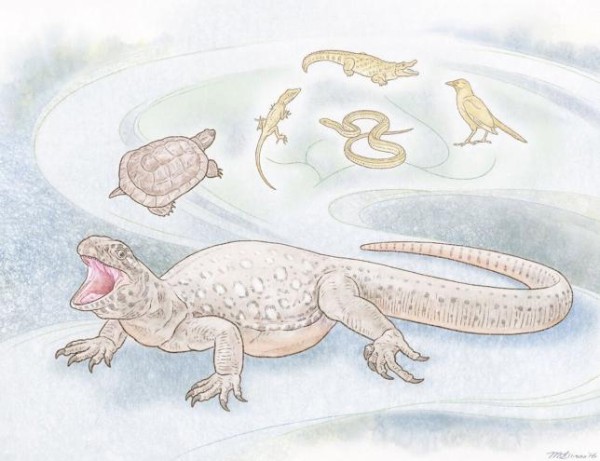Scientists have found convincing evidence that Eunotosaurus, a shell-less animal, is the earliest known turtle ancestor. The animal had lived before Pangea broke up into continents.
Eunotosaurus existed in the very late Paleozoic Era, 260 million years ago. The animal's disc-like torso and wide ribs are comparable to the body parts of a modern turtle, CNET reported.
It was previously hypothesized that Eunotosaurus Africanus is related to turtles. Further studies and new fossil discovery revealed the close connection between the Paleozoic animal and the present -day turtles.
"Eunotosaurus is a critical link connecting modern turtles to their evolutionary past," said study leader Gabe Bever, an assistant professor of anatomy at the NYIT College of Osteopathic Medicine. "This is the fossil that science has been searching for more than 150 years. You can think of it as a turtle before turtles had a shell."
Over four years, Bever and his team used high-res CT scans to analyze several skull fossils housed in museums in South Africa. The result showed that Eunotosaurus fits neatly into the turtle family tree.
An earlier study, also led by Bever, revealed that the turtle's shell could have evolved from the animal's ribs, were broad and flat like the plates of a turtle shell. The Eunotosaurus' vertebrae were nearly identical to those found in some later turtles. However, there was a lack of research into its skull then.
"Imaging technology gave us the opportunity to take the first look inside the skull of Eunotosaurus, and what we found not only illuminates the close relationship of Eunotosaurusto turtles, but also how turtles are related to other modern reptiles," Bever said.
The team found a diapsid skull, a pair of openings, behind the animal's eyes. The diapsid skull allows the muscles of the jaw to flex while the reptile is chewing. Modern lizards, snakes, and crocodilians have diapsid skulls. Modern turtles are anapsid. The openings are fully enclosed by bone.
"If turtles are closely related to the other living reptiles then we would expect the fossil record to produce early turtle relatives with diapsid skulls," Bever said.
The diapsid skull was not discovered earlier because only the skull of the juvenile Eunotosaurus displays clear evidence of the diapsid holes. As the reptile matures, the diapsid skull becomes obscured.
The obscuring of the diapsid skull as the Enotosaurus grows explain how modern turtles became anapsid. Over the generations, the growth may have been more pronounced. Eventually, the diapsid skull evolved into an anapsid one. Bone closing the holes also appeared.
The next step in the research is to study other diapsid reptiles, seeking to expand the turtle family tree.
"The beauty of scientific discoveries is that they tend to reveal more questions than they answer, and there is still much we don't know about the origin of turtles," Bever said.
The study was published in Nature.


